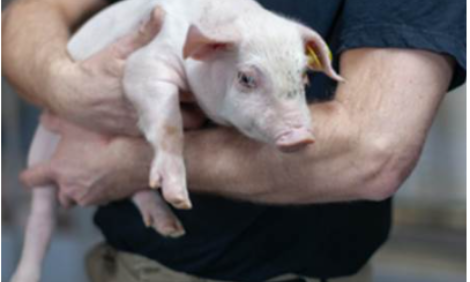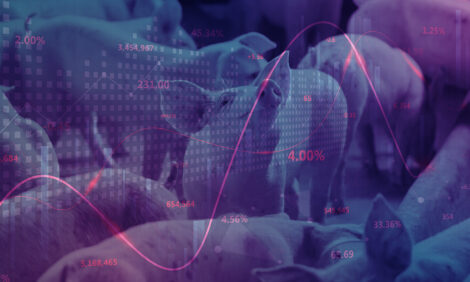



Question and Answers on antibiotics in feed
By the European Commission - Further to the EU's announcement to ban all remaining feed additives that promote growth in livestock, the European Commission has issued a Questions and Answers paper covering many of the questions the ban raises.1. Why are antibiotic substances added to animal feed?
There can be two reasons for adding antibiotics to feed; the first is to treat an animal that is ill so-called therapeutic use; the second is to stimulate and accelerate the growth of healthy animals - so-called use as growth promoter.
2. What is the problem with the use of antibiotics in feed?
The use of anti-microbial drugs has greatly contributed to improvements in animal and human health. However, overuse and misuse of anti-microbial agents have favoured the growth of resistant organisms. This so-called "anti-microbial resistance" may spread to other microbial populations. Infectious diseases that have become resistant to standard anti-microbial treatment present a threat to human and animal health.
In its Strategy to combat the threat to human, animal and plant health posed by anti-microbial resistance, the European Commission set out a full range of actions in the veterinary and phytosanitary field. The phase-out of the remaining uses of antibiotics in feed as growth promoters is one of these actions.
3. Which antibiotics are being prohibited?
The Commission proposal for a new regulation on feed additives withdraws the authorisations of the four antibiotic feed additives that are still on the EU market as of January 2006. They are monensin sodium, salinomycin sodium, avilamycin, flavophospholipol. (see annex for details). These four antibiotic substances are not currently used in medicines for humans thus avoiding that an antibiotic drug used to cure humans is not efficient because the person it is administered to might have developed an anti-microbial resistance.
4. Can farmers currently add antibiotics to feed as they please?
No. A feed additive cannot be sold on the EU market unless it has been officially authorised and can only be used by operators authorised for that purpose. A scientific evaluation must demonstrate that an additive has no harmful effects, on human and animal health or on the environment before it is authorised.
5. Who authorises feed additives and how?
Council Directives 70/524/EEC and 96/51/EEC set out the basic rules for authorisation, use and marketing of feed additives. Additives are authorised for use in feed destined for specific animal species or groups of animal species. A company seeking authorisation of an additive must present a dossier with relevant scientific data. This dossier is examined by the Member States and by the European Commission within the Standing Committee for Feedingstuffs. The Scientific Committee for Animal Nutrition (SCAN), and in particular cases also the Scientific Committee for Food, may be asked to give scientific advice as necessary.
In the White Paper on Food Safety the Commission announced a recasting and simplification of the rules for the authorisation of feed additives and proposed this revision today (see IP/02/466)
6. Why did the EU prohibit some and not all antibiotics in feed in 1997/1998?
Five antibiotic feed additives were prohibited and their authorisations withdrawn in 1997 and 1998 (Avoparcin, Bacitracin zinc, Spiramycin, Virginiamycin and Tylosin phosphate) to help decrease resistance to antibiotics used in medical therapy.
These five substances were prohibited at an earlier stage because they belong to classes of compounds which are also used in human medicine. Their withdrawal from the market was a protective measure to avoid the development of resistance to antibiotics used in therapeutics. The four remaining antibiotics authorised for use in feed as growth promoters (flavophospholipol, salinomycin sodium, avilamycin, monensin sodium) belong to classes of compounds not used in human medicine.
7. Why is the Commission now proposing to phase out the remaining four?
In May 1999 the Scientific Steering Committee recommended the progressive replacement of these four antibiotics in feed by non-antimicrobial alternatives. The scientists found a continuous use of antibiotic growth promoters is undesirable for human and animal health. In its White Paper on Food Safety the Commission therefore announced its intention to phase them out.
The SSC reconfirmed its views in 2001 in the light of the results of new surveillance programmes concerning seven additives as well as new data on antibiotic resistance gene transfer. Consultations with the industry took place on a feasible time frame and to ensure that non-antimicrobial alternatives will be available in due course.
8. Which kinds of animals are currently fed with feed containing added antibiotics?
The existing authorisations for antibiotics as feed additives specify for each substance the animals to whose feed they may be added. Flavophospholipol is currently authorized for use in the feed of rabbits, laying hens, turkeys, chickens for fattening, piglets, pigs, calves and cattle for fattening. Avilamycin is authorized for use in feed for piglets, pigs for fattening, chickens for fattening and turkeys. Salinomycin sodium for piglets and pigs for fattening and monensin sodium only for cattle for fattening (see annex for details).
9. What about the illegal use of antibiotics in feed?
Control and sanctions against illegal use are mainly a task for national authorities.
The new proposal for the regulation of feed additives adopted today contains the obligation to set Maximum Residues Limits (unless the applicant can demonstrate that such limits are not necessary). These limits allow the implementation of residue monitoring plans which are a basic tool for control purposes.
10. What are coccidiostats? Why is their use continued?
Coccidiostats are substances used to prevent and treat coccidiosis in poultry, a disease caused by protozoa that may pass from one bird to another through the droppings on the soil. They cause serious damage to the intestines of the animal thus inhibiting the absorption of nutrients and growth. Infections are often fatal and can spread rapidly.
This proposal contains therefore stricter rules for the authorization and use of coccidiostats but does not rule out completely their use even if of antibiotic origin. Those currently authorized include decoquinate, dicazuril, halofuginone, robenidine, narazin and narazin/nicarbazine, lasalocid-sodium, and maduramicin-ammonium. They are mostly used in broilers, but also to some extent in turkeys and laying hens. To prevent residues in eggs, laying hens may only be fed with coccidiostats during the rearing period. Broilers and turkeys may only be fed with coccidiostats until a certain period before slaughter.
Hygienic precautions and adaptive husbandry measures are not sufficient to keep poultry free of coccidiosis. Modern poultry husbandry is currently only practicable if cocciodosis can be prevented by inhibiting or killing parasites during their development. In order to ensure the safety of these substances the European Commission proposes that authorizations of coccidiostats are to be reviewed within four years time and maximum residue limits set to protect human health.
11. What are the labelling rules for feed additives?
The following particulars will be required for the labelling of all additives:
- the name of the additive, as mentioned in the register;
- the name and address of the person responsible for placing the product on the market;
- the net weight of the active component;
- directions for use and safety recommendations, including animal species for which the feed additive is intended.
For certain categories of additives, the expiry date and specific references mentioned in the authorisation may also be required.
See also factsheet:
http://europa.eu.int/comm/food/fs/afs/authorisation/afs_authorisation_en.html
Annex
Antibiotics authorised in feedingstuffs
| Flavophospholipol |
Rabbits
Laying hens Turkeys Chickens for fattening Piglets Pigs Calves Cattle for fattening |
| Monensin sodium | Cattle for fattening |
| Salinomycin sodium | Piglets
Pigs for fattening |
| Avilamycin | Piglets
Pigs for fattening Chickens for fattening Turkey |
Source: - 18th March 2002








